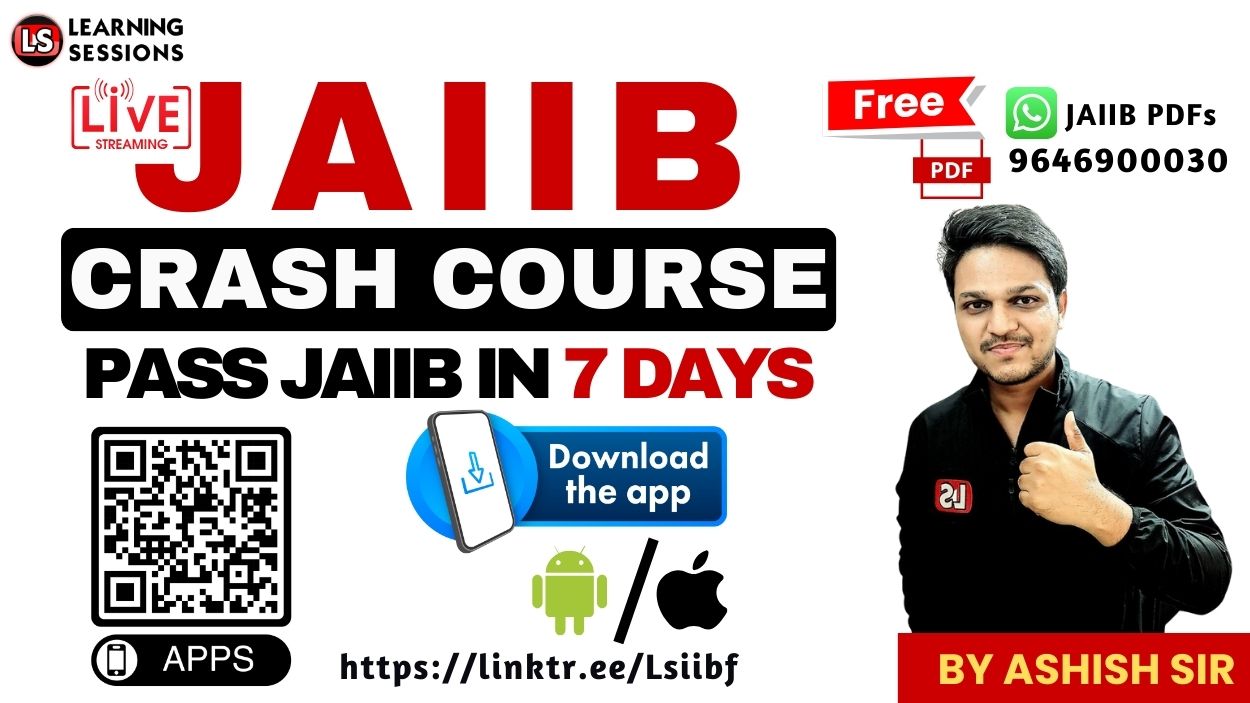This article covers everything you need to know about Microfinance Institutions (MFIs) and Non-Banking Financial Companies (NBFCs) for your JAIIB IEIFS preparation. You will find conceptual clarity, exam-oriented notes, and practical insights — all in one place.
- Watch the full YouTube Video
📚 JAIIB Study Resources 📚
👉 Check Here
👉 Check Here
👉 Check Here
👉 Get Tests Here
👉 Check Here
1. Overview: What are MFIs and NBFCs?
1.1 What is an NBFC?
A Non-Banking Financial Company (NBFC) is an institution engaged in providing loans, advances, leasing, hire-purchase, and other financial services. It cannot accept demand deposits or issue cheques like banks but plays a crucial role in credit delivery to non-banked segments.
1.2 What is a Microfinance Institution (MFI)?
Microfinance Institutions provide small loans and financial services to low-income and underserved populations, especially in rural India. The goal is financial inclusion and empowerment, particularly among women and small entrepreneurs.
2. Microfinance Institutions: Historical & Operational Framework
2.1 NABARD vs Regional Rural Banks (RRBs)
NABARD serves as the apex institution supporting rural development and refinancing programs, while RRBs directly serve the rural population by providing agricultural and allied credit. NABARD formulates policies; RRBs execute them on the ground.
2.2 Lead Bank Scheme
The Lead Bank Scheme assigns one major commercial bank per district to coordinate banking and credit development, ensuring financial inclusion and credit flow to weaker sections.
2.3 SHG-Bank Linkage Programme (1992)
Launched in 1992, this programme connects Self-Help Groups (SHGs) with banks, enabling women and small entrepreneurs to access formal credit through group savings and lending discipline.
2.4 SHG Working Model / JLG Model
In the SHG model, members save regularly and borrow internally before linking to banks. In the Joint Liability Group (JLG) model, 5–10 members take group loans with collective repayment responsibility, promoting trust and discipline.
3. MFI Models & RBI Interventions
3.1 NGO-MFI vs NBFC-MFI
NGO-MFIs operate as trusts or societies offering micro-loans through grants, while NBFC-MFIs are registered companies regulated by the RBI. The latter follow specific prudential norms and microfinance lending standards.
3.2 RBI Intervention (2011 onwards)
RBI introduced microfinance guidelines in 2011 to define qualifying assets, interest rate caps, and fair-practice codes for NBFC-MFIs. These rules safeguard borrowers and ensure transparency in lending.
3.3 Digital Microfinance
Modern MFIs are adopting digital platforms for credit scoring, disbursement, and collection. Digital Microfinance enhances speed, reduces costs, and increases transparency for rural borrowers.
3.4 Grameen Bank Model
The famous Grameen Bank Model from Bangladesh introduced group-based lending to empower women. Indian MFIs have adopted this model to combine financial and social upliftment goals.
4. NBFCs & Scale-Based Regulation (SBR)
4.1 Scale-Based Regulatory Framework
Introduced by the RBI, the Scale-Based Regulation (SBR) classifies NBFCs into Base, Middle, Upper, and Top Layers according to their size, risk, and systemic importance. Upper Layer NBFCs face stricter supervision and governance norms.
- NBFC-MFIs’ qualifying asset requirement reduced from 75% to 60% (2025 update).
- Stricter NPA recognition timeline – 120 days (FY2025) to 90 days (FY2026).
- Enhanced corporate governance for large NBFCs.
4.2 Core Investment Company (CIC)
A Core Investment Company (CIC) is a non-operating NBFC that primarily holds investments in group companies. It must maintain specified capital adequacy and asset composition norms.
4.3 Regulators of Different Financial Institutions
Banks are regulated under the Banking Regulation Act, 1949; NBFCs and MFIs fall under the RBI Act, 1934. Different institutions like SEBI, IRDAI, and PFRDA regulate capital markets, insurance, and pension sectors respectively.
Mastering Personal Finance & Laws relating to Bill Finance for JAIIB PPB
5. Key Regulatory Guidelines for MFIs & NBFCs
- Master Directions for NBFCs (2023) under the Scale-Based Regulatory framework.
- Interest rate and recovery guidelines for NBFC-MFIs.
- Microfinance household repayment cap to prevent over-indebtedness.
- Prudential norms for asset classification, capital, and governance.
- Promotion of digital operations for financial inclusion.
6. Topic-Wise Summary for JAIIB IEIFS Exam
| Topic | Key Points |
|---|---|
| NABARD vs RRBs | Difference in function, structure, and regulatory role. |
| Lead Bank Scheme | District-level coordination for inclusive growth. |
| SHG-Bank Linkage (1992) | Group savings → credit linkage → empowerment. |
| MFI Basics & Financial Inclusion | Micro-credit, women empowerment, rural reach. |
| NGO-MFI / NBFC-MFI | Operational and regulatory difference. |
| Digital Microfinance | Tech-based lending, data-driven operations. |
| Grameen Model | Group-based lending and social collateral. |
| Core Investment Company (CIC) | Non-operating investment holding NBFC. |
| Scale-Based Regulation (SBR) | Classification into layers; stricter norms for large NBFCs. |
| RBI Amendment 1997 | Expanded RBI powers over NBFCs. |
7. Recent Updates (2024-25)
- NBFC-MFI qualifying asset limit lowered to 60% (June 2025).
- Asset-quality stress visible in MFI sector; stricter risk management norms.
- Upper-Layer NBFCs list expanded under SBR framework.
- Digital transformation becoming mandatory for microfinance operations.
Conclusion
Understanding Microfinance Institutions and NBFCs is vital for every JAIIB IEIFS aspirant. These concepts bridge financial inclusion and institutional development in India. Use this article, YouTube Video to reinforce your preparation, and don’t forget to explore the JAIIB IEIFS Course for deeper learning.





